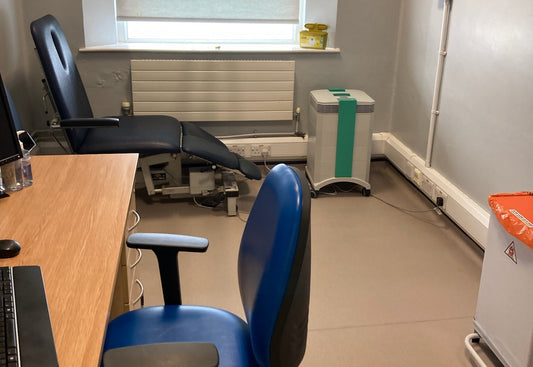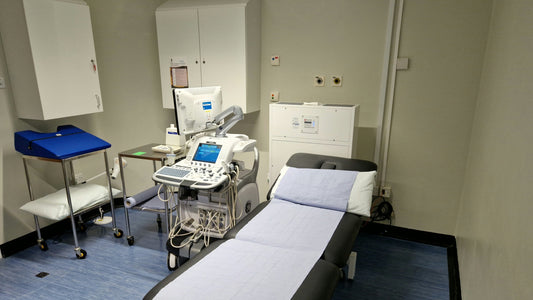'Are there any unpleasant odours?' This is a key question in the 'first impressions' section of Alzheimer's Society's factsheet 'Selecting a Care Home.' Both residents and their family concerned about odours in care homes. There are many people – some of whom may have continence issues – confined to limited space and odours may build up if not managed properly. The same, of course, is true of the hospital setting, where sick people may emit odours from body waste and infected wounds. In this article, we look at the main types of human body odours in care homes, what they are and how care home air cleaning solutions can help to control odours effectively.
Faeces and Urine (Incontinence)
Bacteria in the gut act upon food passing through it, producing a range of sulphur-containing volatile compounds which smell bad, including skatole and hydrogen sulphide. Fresh healthy urine does not have much of a smell, but stale urine or urine from someone who is dehydrated may smell of ammonia, which has a fishy odour. If a person has normal toilet habits, then the smell of their waste products should not cause any problem. But if they are incontinent of urine or faeces (or both), then spills and accidents may occur which obviously creates a problem with odours in care homes. Of course, it's essential that the hospital or care home has a strict hygiene/cleaning policy which means that such incidents get cleared up right away (as well as strategies for avoiding them in the first place, such as providing regular toileting opportunities, supervised if need be, and/or absorbent pads for those with continence issues).
Infected Wound Odours
An infected wound often produces a bad odour – sometimes so bad that it can be perceived from the door of the patient's room, even with the wound covered up. There are two main reasons for infected wound odours in care homes. The infection itself involves bacteria of the type which will produce foul-smelling compounds such as cadaverine and putrescine. Second, the wound may become necrotic, containing dead tissue. This, in itself, attracts bacteria which feed on the dead tissue and produce further foul odours. Infected wound odour is a serious clinical problem, which may make the patient lose their appetite and cause them, and their visitors, a great deal of embarrassment and depression. This can lead to malnutrition and social isolation, which will both hinder recovery. Leg ulcers and advanced breast cancers are among the common causes of infected wound odours.
Management of infected wound odours involved dealing with the infection itself, with strong antibiotics. Removal of dead tissue (debridement) is also done, where appropriate, to remove the source of the odour.
Vomit
The stomach contains strong acidic secretions to help digest food and when someone vomits ('throws up') the emission consists of acidic, partly digested food which usually smells bad, and the odour lingers. A person suffering from vomiting (and/or diarrhoea) may spread infections like norovirus or Clostridium difficile so it is important to clean up incidents and, if possible, put the patient in an isolation room at negative pressure. This will contain the odour and, more importantly, the infection.
Old Person Odour
Recent research confirmed that an 'old person smell' does exist. The study showed that people were able to distinguish, by smell alone, between people of different age groups. However, we do not know precisely what this smell consists of although there have been many anecdotal reports of a 'care home smell' which may be the same thing. The researchers, from the Monell Chemical Senses Center in Philadelphia, thought the smell might be attributed to changes in the sweat glands, which are responsible for body odour in sweat, or to decaying cells. In care homes, and in older people's houses, it is also possible that the odour may arise from difficulties with personal hygiene. It is interesting to note that, in the Monell study, the participants did not find the 'old person smell' particularly unpleasant. Nevertheless, if the presence of a group of older people in the care home environment leads to an odour over and above those described above, it needs to be dealt with lest they, visitors and staff, do find it hard to tolerate.
Decaying Flesh
Once a person has died, cells and tissues begin to digest themselves (autolysis) through enzyme action. This releases fluids which are rich in nutrients for bacteria. In this stage, known as putrefaction, compounds like cadaverine and putrescine (mentioned above) are produced, causing the bad smell of a corpse. Those working in autopsy rooms, ambulances, funeral homes and mortuaries may be exposed to these odours. Care home air cleaning solutions can be used to help reduce or neutralise the problem.
The Solution
Controlling unpleasant human odours is achievable when the correct steps are taken.
We recommend the following three key steps:
1. Help protect against unpleasant odours before they occur. This can be achieved by helping people with good personal hygiene, being available to help when someone is in difficulty and protecting people from infection, which can lead to outbreaks of diarrhoea and vomiting. Washing hands, wearing protective clothing and capturing airborne germs, viruses and bacteria is crucial.
2. Manage the situation the moment there is an issue. This could be providing appropriate treatment in the case of infected wounds or cleaning up any mess the moment it is created. Odours from vomit are particularly difficult to remove so acting quickly is the best course of action. For the most difficult of odours, air purification can be used to ‘draw out’ lingering smells.
We do not recommend using air fresheners and aerosols to mask smells. Products like that can trigger asthma and allergy symptoms and release high levels of ultra-fine particulate pollution into the environment. Allergy friendly odour control products such as the Allersearch ODRX Odour Eliminator are a healthier, effective and natural alternative.
3. Perhaps the simplest way of reliably and continually improving air hygiene is by using medical-grade air purification systems specifically designed to manage odour, for example, the IQAir GCX. Such systems can be fitted with odour retaining cartridges that target specific odours, for example, ammonia, or a broader range such as cooking smells. They are easy to use and very mobile. They will also capture and retain allergens, germs and other air pollutants - and so can greatly enhance the quality of life for residents.
For more information and help with controlling odours in your care home or the environment, contact one of our odour control experts at Commercial Air Filtration. You can call us on 020 3176 0524, or email us.




